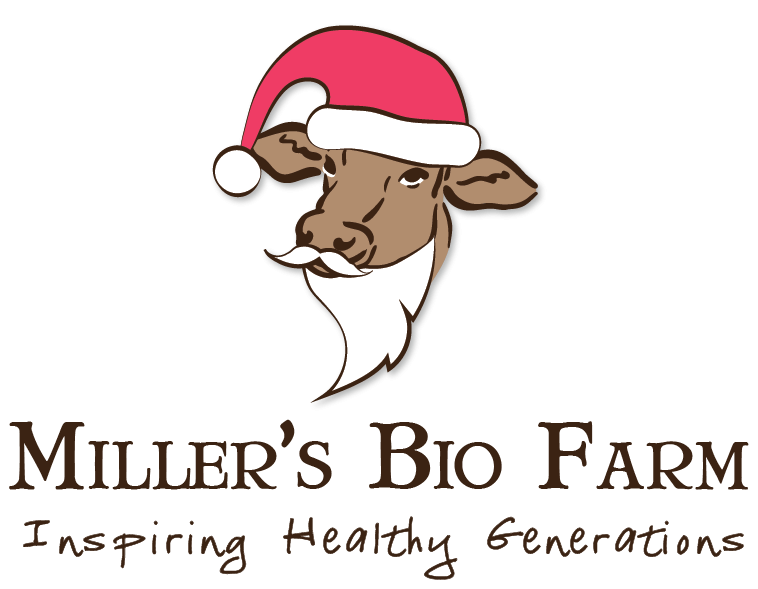Shopping for butter? Wondering what makes "the best" natural butter?
posted on
November 5, 2024

It's that time of year when I find myself buying NATURAL BUTTER BUNDLES to stock my freezer with.
Why? The large amounts of cookies and pies that fill my house with delicious flavors is impending and inevitable. And the absolute worst thing for a holiday baker is to go to make a yummy recipe and find that you're out of butter! I gotta stay stocked (and after all if I don't use it all now, it's good for a year in the freezer).
When it comes to butter and baking, quality matters. A lot. It affects the color, the texture, and the flavor of your baked goods.
And, if you're a natural food shopper like me, there are some extra things to look for in your butter. I want to make sure I'm making food with the best nutrition and least toxins possible.
What makes the best natural butter? There are a bunch of factors, and I'm happy to report that MILLER'S A2/A2 BUTTER checks all the boxes.
Here are the top 6 things to look for when shopping for natural butter:
✔️ High Butterfat. Commodity and supermarket butter typically has 80% butterfat. It helps keep the price down. But, our butter and European butters have a higher fat content, from 82-85% butterfat. It's all about getting a good churn and washing out all that buttermilk. Higher butterfat means softer, smoother, melt-in-your-mouth texture without feeling greasy.
✔️ Pasture Raised + 100% Grass Fed = Best Nutrition. Butter is a good source of lecithin and is rich in various vitamins, including A, D, E, B12, and K2. When the cows are raised in natural health, these health benefits are supercharged, which means more of all the good things! Our cows are pasture raised and 100% grass fed.
*Side Note: Spring butter is known for having max nutrition. We make it for 4 weeks of the year, when the cows are eating first growth of pasture in the spring. It's the most yellow and the most nutrient packed.
✔️ Yellow Color. A natural yellow color is a sign that the cows are fed grass, not bland and subsidized grains like corn and soy. The yellower the butter, the better the butter. The yellow color comes from the beta-carotene (which your body converts into Vitamin A) in plants, so this is a distinct trait of butter from grass fed cows. Some conventional butters have added colors like annatto extract to make the butter superficially yellow.
✔️ A2/A2. Although butter is low in protein, it does have some. If you want to avoid the potential opiate effects and longterm health damage caused by the A1 beta-casein protein, then A2/A2 is the way to go. I also like to think of A2/A2 as the most heritage dairy there is, since A2/A2 cows weren't affected by a genetic mutation.
✔️ Additive Free. Supermarket butters may have sodium chloride (AKA food grade salt), artificial colors, artificial flavors like diacetyl, or other unnecessary additives. Yuck! And this is all to keep the same consistency every time and perhaps cover up cheap, unnatural farming practices. Our butter is made simply with cream and only cream. If we add salt, it's Celtic sea salt. It's truly natural and will vary from batch to batch.
✔️ PFAS-Free. Trying to move away from plastic food packaging? Me too! Butter wrapped in paper sounds great, but it has to be coated in something so it doesn't spoil. Most butter papers are coated in plastic and can have all kinds of weird stuff on it -- including forever chemicals like PFAS -- which in turn can transfer to your precious butter. Our butter comes in 1lb blocks and is wrapped in paper that's tested to be PFAS-free, and freezer-safe!
Want to learn more? Keep scrolling for some butter-related recipes and blog posts to help you become a butter expert. After all, you deserve to have all the info you need, so you can be a smart natural food shopper.
What are you baking this holiday season? I'd love to hear if Miller's butter will elevate your recipes. Comment below or contact us!
-----
RELATED BLOG POSTS
-----
RELATED RECIPES

Einkorn Chocolate Chip Cookies Recipe

A2/A2 All Butter Einkorn Pie Crust





